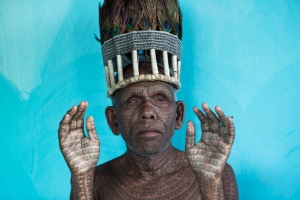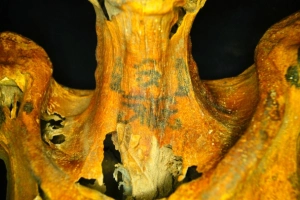When we say that a tattoo is for ever, we really mean it. Removal operations aside, the discovery of tattoed up mummies showed how the ink survives better than the skin thousend of years after the death. Embalming procedures are less frequent nowadays, of course, so “for ever” is limited to the life of the person who decides to decorate his or her body, until decay overcomes. But if you look for some kind of eternity, the 18th Internatioal Tatto Expo in Rome, from 5th to 7th of May at Palazzo dei Congressi, will be a good opportunity. Not only for the 400 artists that will be there, also to check out all the latest news of the branch and find related apparel.
Such as writing, tattoes appeared more or less simultaneously all over the world, from Egypt to Peru, from central Asia to Greenland. In addition to the mummies, archeologists found rudimentary tools used to tattoo, like animals bones and teeth or plant thorns. So there wasn’t a singular epicentre from which the “habit” spread, also because 5000 years ago, communications weren’t that easy! We deduce that decorating bodies was an expressive need for every community, like any other form of art.
For many cultures, tattoes were an identity distinctive, on social, ethnic or religious basis and a rite of passage, from infancy to adulthood, impossible without feeling some pain. Thauru women in Nepal used to tattoo their hands as an ornament with the purpose of serving tea properly. The untouchable Ramnami in India wrote on their faces the name of god Ram. Many populations in Myanmar differientate their status of warriors and head hunters of specific clans.

In western countries, tattoos had different fate. In ancient Greece and Rome were initially considered something for barbarians, slaves and war prisoners. But the connection with other cultures made them tolerated. Christianity accepted tattoes only as the sings of pilgrims, with sacred images. Captain James Cook, between XVIII and XIX century, introduced in Europe the term and concept of tattoo, coming from the polineasian word tatau, which means beating, marking, from the onomatopoeic of the sticks that carve the skin. At the beginning the diffusion of tattoos was across the board, in few decades was associated to sailormen and outcasts, because of the “scientific” theories of Cesare Lombroso, accepted by most psychologists: tattoed up people were homosexuals, psychopaths, criminals.

At the very same time there were improvings on the tattoing techniques. The prototype of the modern needle was patented by Thomas Edison, but used mostly for prints. Samuel O’Reilly had the idea of turning this electric pen to inject directly the ink and he became one of the first artists of the branch. But still it took a very long time before tattoes were “legitimized”: even in the Seventies-Eighties was seen as a rebellion against society rules.
Finally in western countries too, the tatto lost the trasgression and had the artistic credits always recognized in Asia, whether is pure aesthetic or it tells a story. On the contrary, the risk is that too much popularity lowers quality standards, that improvised tattoers see that as a profitable job as another. Forgetting that, like diamonds, tattoes are forever. And without exploiting kids!



































2 thoughts on “A tattoo is forever”
Comments are closed.